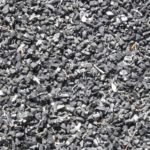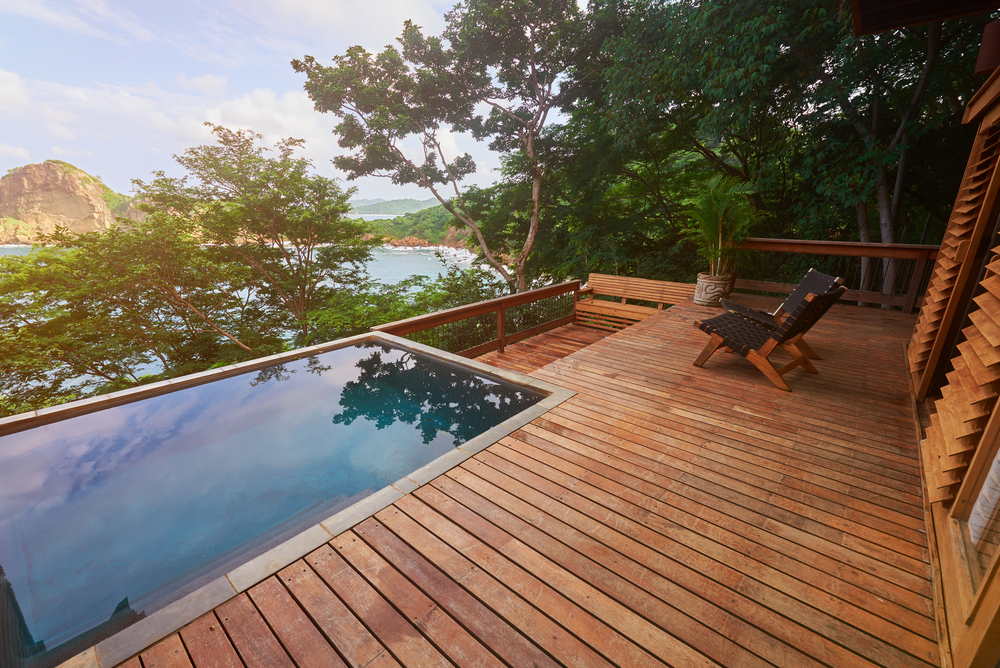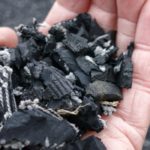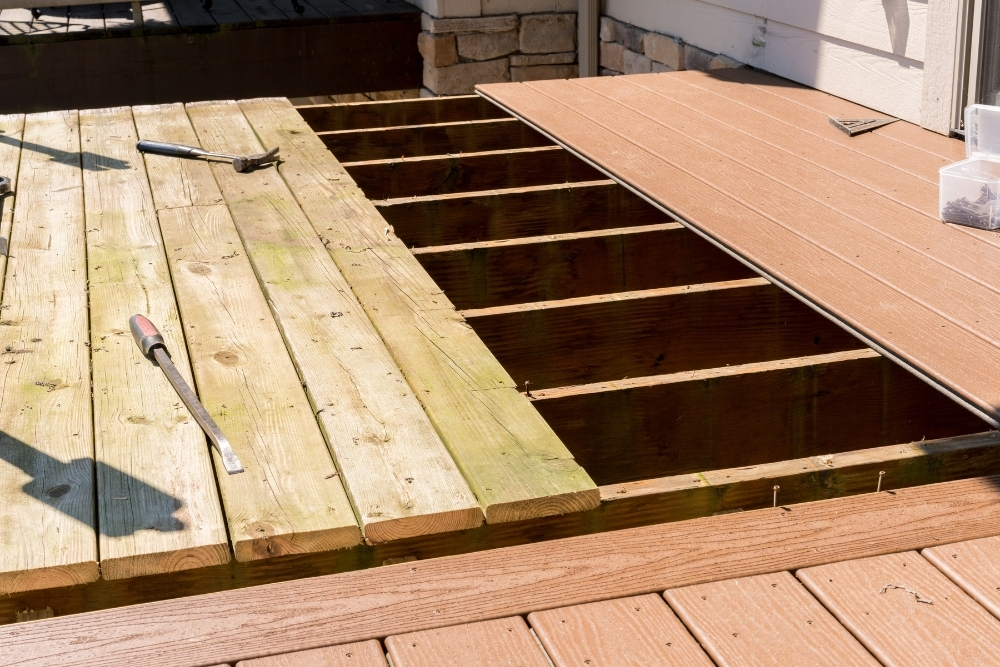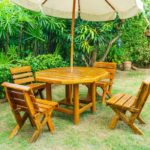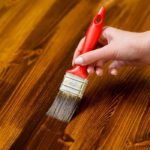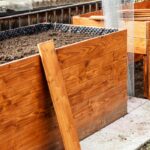If you’ve got some landscaping to do on your property, you might find it tricky to choose between rubber and wood mulch. Both add aesthetics, maintain the soil temperature, control weeds, reduce soil erosion, and conserve soil moisture. So which is the best fit for your garden bed?
Both rubber and wood mulch can significantly improve the aesthetics of a landscape. Rubber mulch is best suited for areas with plants that aren’t grown for consumption, but it’s also the more costly option. Wood mulch works well in areas with edible plants — and it’s cheaper and easier to install.
Before you settle on one type of mulch, let’s take a closer look at these two mulch options and the features that distinguish them. That way, you can pick the right one with confidence.
Properties of Rubber Mulch
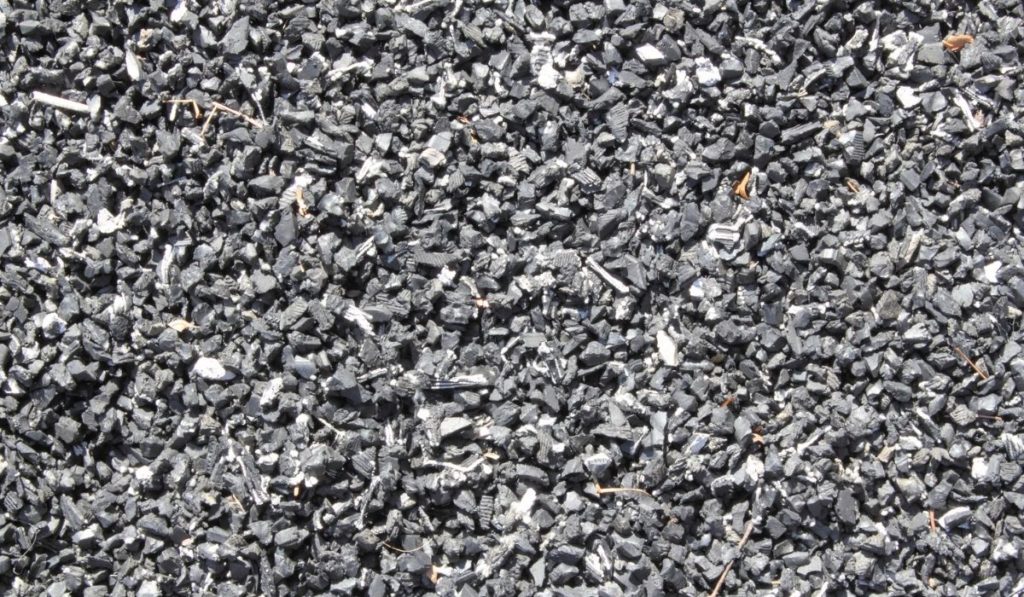
Rubber mulch (example on Amazon) is available in various sizes and textures. You can also find it in the form of complete rubber mats that roll out to form rings. These are perfect for use around shrubs and trees.
The chippings resemble wood mulch, and you can find dyed variants if you’d like to add a splash of color to your landscape.
To prepare recycled rubber mulch, the manufacturers clean and shred old tires and waste tire buffings into different sizes. They also remove the metal wires used to reinforce them.
However, rubber mulch may contain wire strands missed during the plant processing. Therefore, it’s a good idea to confirm if the manufacturer’s production method guarantees all the metal will be removed. Even if they do, wear protective gloves and knee pads when applying the mulch.
Rubber mulch is often difficult to transport since it’s heavier than most organic mulches. However, the weight means it offers better durability and longevity in the face of rain and strong winds.
In terms of cost, expect to part with roughly $10 to $14 per cubic foot if you go for rubber mulch. The price you pay depends on the grade and quantity of the mulch you purchase.
Pros and Cons of Rubber Mulch
The advantages of using rubber mulch are as follows:
- It helps save on disposal impacts.
- It doesn’t absorb moisture, so it can controls weeds by dehydrating their seeds.
- Prevents the growth of mold and fungi by absorbing heat.
- Reduces soil erosion because it’s physically heavy.
- May keep away snakes due to the unique smell when heated in the sun.
- Saves you the hassle of conditioning the soil during planting. This is because it doesn’t compact the soil.
- Maintains its look through every season.
- Can last for decades and requires very little maintenance.
These are some of the cons of using rubber mulch:
- It doesn’t decompose over time, meaning it adds no nutrients to the soil.
- Poses a significant fire hazard if used around structures since rubber burns easily.
- It’s difficult to remove if it settles into the ground as it can’t be tilled into the soil.
- Could contaminate the soil with metals.
- Loose rubber chippings may require landscaping fabric (on Amazon), an added cost.
Rubber Mulch Maintenance
Properly installed rubber mulch needs little to no maintenance and can last beyond a decades. It will help you realize cost-saving benefits in the long run.
It also doesn’t attract mice, carpenter ants, or termites. You’ll be spared the hassle of treating the mulch for insect infestations. The same can’t be said for wood mulch.
Moreover, rubber mulch doesn’t need special care for mold and most fungi. It’s not very porous, meaning it won’t hold any moisture on its own or soak it up from the ground.
Since rubber mulch is heavy, it won’t be easily blown away by the wind. That’s great news because you won’t have to keep swapping it back in place.
Understandably, you’ll eventually need to remove rubber mulch. And if you didn’t lay it on landscaping fabric, it complicates the process a bit. Remember, it’s extremely difficult to remove rubber mulch when it gets into the ground.
Properties of Wood Mulch
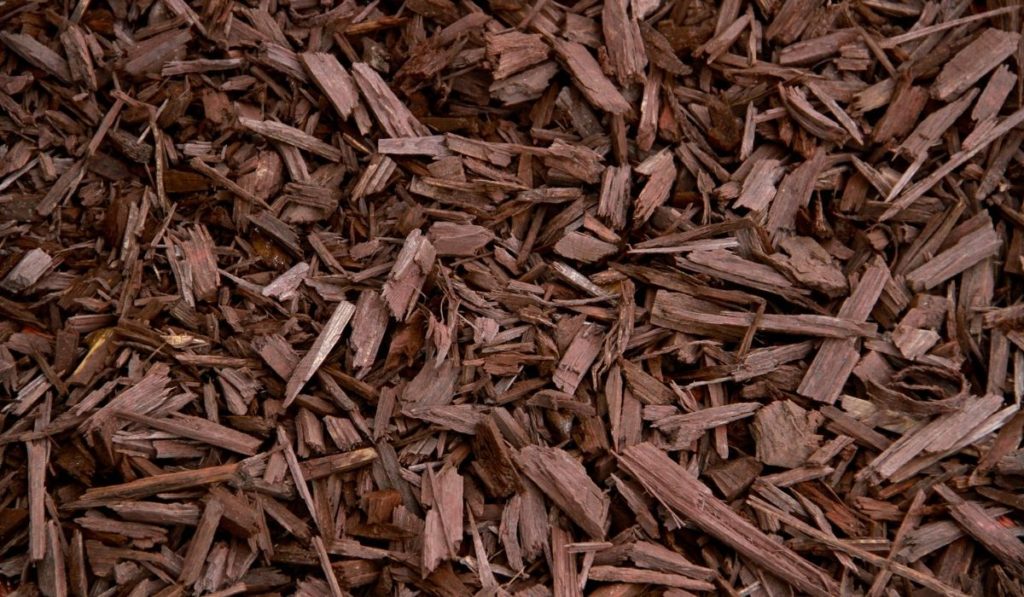
Wood mulch comes from recycled wood matter like cedar barks, old pallets, waste offcuts, and branches. The wood is cut into fine chips that vary in texture, color, and consistency depending on the fineness of the cut, the wood species used, and the other contents of the mulch.
The upside of using wood mulch is that it decomposes over time and nourishes the soil where it’s used. In fact, natural wood mulch is the best option for use in areas where you grow fruits and veggies. Furthermore, wood mulch contains fibrous organic matter that helps beef up the soil structure.
Untreated wood mulch has no VOCs (volatile organic compounds) that would otherwise leach into the soil and end up in plants. A good wood mulch even uses non-toxic dyes.
Wood mulch generally costs less than rubber mulch; you can expect to pay between $2 to $5 per square foot. That’s for a block that’s 11 to 12 inches thick. However, you’ll need to buy it repeatedly since wood mulch decomposes over time.
This kind of mulch is also lighter and easier to transport. If you have the DIY skills, you can install wood mulch with the right tools and equipment. As it turns out, however, the process is labor-intensive, and covering a large yard can take quite a long time.
You may be better off hiring a local mulching company to do the work if you’re dealing with a large area. Remember, they’ll handle delivery and have the professional knowledge and equipment to make the job smooth and efficient.
Pros and Cons of Wood Mulch
These are the pros of using wood mulch:
- It breaks down over time and doesn’t need to be removed when you need to plant in the area.
- It adds nutrients to the soil as it decomposes slowly and improves the soil structure.
- It’s relatively easy to install and doesn’t require the use of landscaping fabric.
- Conserves the soil moisture and maintains a constant temperature.
- Reduces soil erosion to a considerable degree.
- More suitable for use if you practice organic farming since most dyes used in wood mulch are non-toxic. What’s more, there are additional colors available that are vegetable-based.
These are the cons of using wood mulch:
- The material biodegrades relatively fast and needs annual replenishment.
- Wood mulch removes nitrogen from the soil as it decomposes.
- It can get compacted and block water penetration and airflow.
- Wood mulch from treated lumber may contain toxic substances like creosote and arsenic that can harm plants.
Wood Mulch Maintenance
Unlike rubber mulch, wood mulch requires a bit of maintenance. First off, it’s considerably lighter and could be easily blown away by the wind. You’ll have to sweep it back in place to block weeds.
Moreover, wood mulch may easily attract insects like termites, carpenter ants, and Asian cockroaches. You should, therefore, be ready to treat it against insect infestations.
Since wood mulch can retain moisture, it can also harbor mold and fungi. You need to carry out regular inspections and treat it if infested with fungi.
Wood mulch, just like most organic mulches, breaks down over time and needs to be replenished frequently. However, you don’t have to use it with landscaping fabric.
Is Rubber Mulch Safer to Use Than Wood Mulch?
Rubber mulch isn’t safer to use than wood mulch. Over time, it may leach plasticizers and metals like zinc into the soil. Excessive zinc can stunt plant growth, and even kill plants over time. For this reason, experts recommend you don’t use rubber mulch in vegetable gardens and edible plant beds.
On the bright side, high-quality rubber mulch is thoroughly cleaned to remove metal compounds. It’s also stripped of metal wire strands that will leach excess iron.
Alternatives to Mulch
If neither wood nor rubber is sounding like the best choice for you, here are some great alternatives:
Coconut Coir
Coconut coir is often made into pieces and fibers that are small enough to form a good mulch cover. Since the material is considerably soft, it’s an excellent choice for use around pets. Additionally, it’s non-toxic and does remarkably well at keeping away weeds and slugs.
Grass Clippings
Grass clippings are okay to use as mulch provided that you don’t treat them with harmful pesticides and herbicides. Before you spread the clippings in your garden, lay them out in the sun so they can dry properly.
Newspaper
Shredded newspaper can form a great mulch cover to block out weeds, conserve moisture, and maintain the soil temperature so that your plants can grow healthily. To keep the mulch in place, wet it generously with your garden hose, allowing the pieces to bond together.
While shredded newspaper is a beautiful mulch alternative, there’s a caveat for using it around pets. If your dog is a notorious chewer, you might want to reconsider this option.
Shredded Leaves
This is a budget-friendly mulch alternative since you can easily collect fallen leaves from your yard. Next, ensure the leaves are dry enough before you use them as garden mulch.
Also, leave a margin of about 4 to 6 inches around your plants. This way, the mulch won’t touch the plants as it decomposes, which would otherwise infect your plants.
And if your pets enjoy playing around the garden or flower bed, ensure the leaves you use are non-toxic.
Straw and Hay
Straw and hay mulches are relatively affordable and easy to install. However, these mulches decompose faster and will have to be replaced more often. If you don’t like the raw look, you can also add another layer of another mulch on top.


